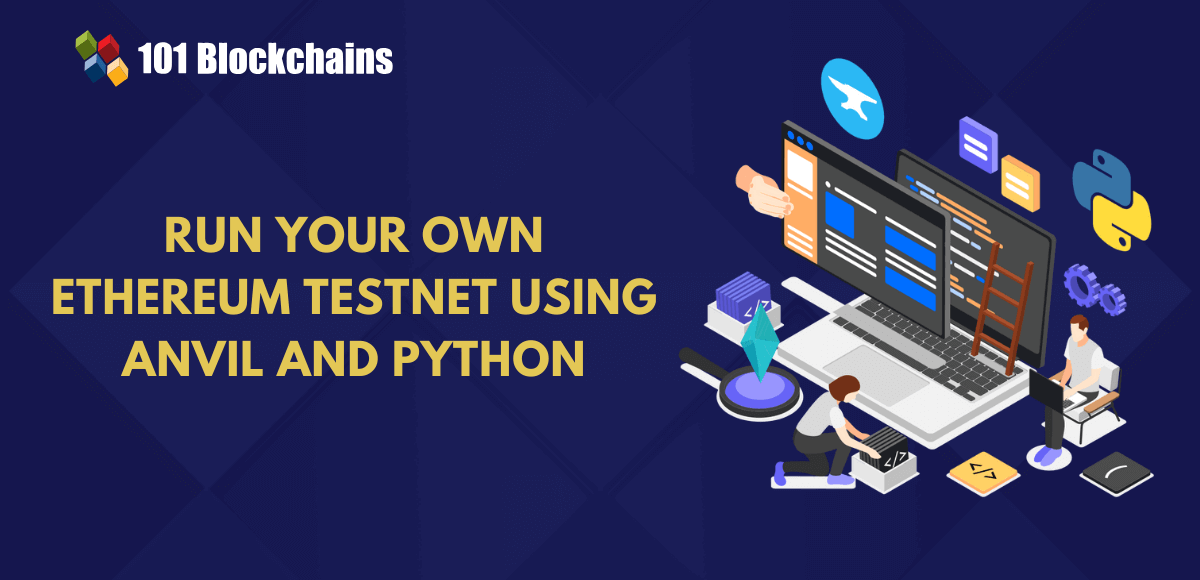Business models provide the description of approaches through which companies could create value for users as well as stakeholders. With the constantly changing competitive landscapes for businesses in the modern era, adaptability is crucial for the sustainability of businesses. Therefore, business model innovation becomes a mandatory requirement for enterprises that want to maintain their levels of competitiveness. As a result, the demand for business model innovation tools has been increasing profoundly in recent times.
The following discussion would offer you clear insights into the different tools for business model innovation. Readers could discover the functionalities of the tools alongside diving deeper into their strengths and weaknesses. In addition, the discussion would also reflect on the basic functionalities of software tools for business model innovation with examples.
Curious to learn how business model innovation can support the growth of your business? Join the Standard & Premium Plans and Enroll Now in Business Model Innovation Course!
The Necessity of Tools for Business Model Innovation
The growing demand for innovation clearly points out towards the necessity of research and development for developing the capabilities of businesses for competing with innovative solutions. In addition, it is difficult to differentiate a business while ensuring that it could be one of the competitive players. Business model innovation could help enterprises in achieving profitable and sustainable technological innovations. However, what is the ideal approach for pursuing business model innovation? You could not just think of innovation and make a few changes in the existing business model to showcase innovation. This is where innovative business models tools can show you the best way ahead.
Why would you need tools? Imagine that you have to tighten a screw. You would have to look for a screwdriver and not a hammer. Therefore, you would need the right tools that can help you innovate business models with ease. It is also important to note the type of task or the field of innovation you want to pursue. So, you could find different strategy tools for business model innovation to help you find the right direction for innovation in selected business models. However, people could also have apprehensions regarding the definition of business model tools.
Don’t know much about business model innovation? Read here 4 Steps To Business Model Innovation now!
What are the Business Model Tools?
Business model tools basically work as boundary objects which help companies and stakeholders in providing the description of business models. In addition, they also help in communication regarding business models among organizations. Business model innovation tools could be available in different forms such as printed cards, templates, websites, or even apps and software. Some tools for business model innovation focus profoundly on the comprehensive scope of a business model. On the other hand, some tools could focus only on particular aspects. In addition, the answers for ‘What are business model tools?’ could also point out the concerns of differences in the level of detailing in the models. Now, let us take a look at the different tools you could find for supporting your business model innovation ventures.
-
Minimum Viable Product
The first addition among common strategy tools for business model innovation includes the Minimum Viable Product or MVP approach. The MVP is basically a prototype focused on the most critical aspect of a product or service. Businesses offer the product to a specific group of potential customers. The effectiveness of MVP as a tool for business model innovation largely relies on the evaluation of the viability of the solution. The prototype helps in testing the core aspects of the value proposition alongside learning from it with abilities for data replication. MVP plays a crucial role in business model innovation by avoiding the risk of developing products or services without viability.
The MVP tool for business model innovation helps in encouraging faster learning alongside reducing the cost of failure. It also supports out-of-the-box thinking rather than working on new ideas without any feedback. Customer feedback provides reliable support for shaping up the value proposition in a new product or solution. However, MVP involves the risk of emphasizing minimum features only alongside the commitments for iteration of the idea.
-
Business Model Canvas
One of the foremost answers for ‘What are business model tools?’ would immediately bring the mention of Business Model Canvas. As a matter of fact, the Business Model Canvas is one of the most common tools used for the visualization and development of business models. The key highlight of the Business Model Canvas tool in business model innovation refers to the focus on underlying building blocks. You can discover nine different building blocks focused on the description of customers, value proposition, value creation, and value delivery. Furthermore, it also focuses on the financial perspective of a business model. You can use a Business Model Canvas for defining the following elements clearly,
- Value propositions for the customer.
- Customer segments.
- Channels used for delivering value to customer segments.
- Relationships between the business and customers.
- Revenue streams showcasing the approaches for generating revenue.
- Key activities implemented for generating value for customers.
- Key knowledge, financial and infrastructure resources.
- Key partnerships which help in creating value, including suppliers.
- Cost structure showcasing the costs from the creation and delivery of value to customers as well as from key resources and activities.
Business Model Canvas is one of the best strategy tools for business model innovation with some prolific strengths. First of all, the Business Model Canvas is quite a popular tool for encouraging business model innovation. With an easy-to-understand general structure and ease of implementation, it also offers the prospects of additional resources, online tools, and information. Business Model Canvas presents a promising case for business model innovation with a formidable focus on the value proposition for customers.
However, the Business Model Canvas also has its own share of setbacks. You don’t find any clarity regarding the relationship between the components or the value exchange between core concepts and actors. In addition, it does not present any information regarding competitive strategy or growth strategy.
Do you know how blockchain impact enterprise supply chain operations? If no, enroll now: Enterprise Blockchains and Supply Chain Management Course
-
Lean Canvas
Moving on to the next addition among business model innovation tools, you could land up with the lean canvas. The Lean Canvas draws inspiration from the Business Model Canvas and is a suitable business modelling tool for entrepreneurs. It includes some of the crucial factors which can help entrepreneurs in addressing the concerns of risk and uncertainty. Furthermore, the Lean Canvas is considered more actionable. You can find additional elements in the Lean Canvas such as,
- Problem
- Solution
- Key Metrics
- Unfair Advantage
It is also important to note that the Lean Canvas focuses prominently on principles of the ‘Lean Startup’ approach i.e. build-measure-learn. You can clearly note the value advantage of the problem-solution fit in the Lean Canvas for business model innovation. The Lean Canvas approach also offers metrics for success with the unfair advantage aspect supporting differentiation in the market. In addition, the most important highlight of Lean Canvas as one of the innovative business models tools refers to the ease of understanding the structure and elements. However, Lean Canvas retains the setbacks of lack of clarity regarding partners and the value exchange among different actors. In addition, the definition of the unfair advantage could pose setbacks in the early stages of developing an idea. Furthermore, you can also encounter the issues of missing building blocks like sustainable business models.
-
Business Model Framework
Another top choice in answers to “What are business model tools?” would point out to the Business Model Framework. The basic objective of the framework focused on the analysis of startups alongside supporting the development of creative thought. The effectiveness of the Business Model Framework has been largely dependent on the focus on aspects other than the customer and the value proposition. You can discover nine building blocks in the Business Model Framework with each building block featuring specific prompts and explanations tailored towards B2C tech businesses. With inspiration from tools such as the Business Model Canvas, Porter’s five forces, and the Gary Hamel approach, the Business Model Framework presents viable competitive advantages. Most important of all, Business Model Framework is one of the notable business model innovation tools with an emphasis on competitive strategy and growth.
The Business Model Framework introduces some conclusive benefits such as ease of understanding and implementation. Most important of all, it features essential strategic components for driving competitive strategy and growth. It also offers an improvement over the setbacks in Business Model Canvas and Lean Canvas by offering visibility into high-level relationships among components. However, you could not find clarity regarding value exchange between the different actors. In addition, it does not feature any components for cultural or team aspects.
Want to understand about the opportunities in Business Model Innovation? Read here for The Opportunities And Barriers Of Business Model Innovation now!
-
Social Business Model Canvas
You could also come across Social Business Model Canvas as a favorable addition among strategy tools for business model innovation. However, there is a distinct catch with Social Business Model Canvas as it focuses solely on supporting social innovators. Basically, it helps social businesses which focus more on the value created for customers rather than the profits. You can discover 13 building blocks in the Social Business Model Canvas with the following highlights.
- You can find two distinct categories of ‘customer’ and ‘beneficiary’ in the ‘Segments’ component of the Social Business Model Canvas.
- The value proposition component in the Social Business Model Canvas includes elements such as ‘impact measures’, ‘social value proposition’ and ‘customer value proposition’.
- Social Business Model Canvas also includes the classification of the type of intervention for describing the type of products delivering value.
- The canvas also features an outline of key stakeholders associated with the innovation other than the partners in the process.
- Furthermore, it also features a ‘Surplus’ component for describing your plans regarding the investment of profits.
Social Business Model Canvas presents some of the unique features in comparison to other business model innovation tools. The most crucial advantage associated with this tool refers to the emphasis on the characters of a social business. With the Social Business Model Canvas, you could discover a comprehensive high-level overview alongside ease of comparing different business model frameworks. The most prominent setback associated with the Social Business Model Canvas tool refers to the lack of clarity regarding value exchange among different actors. In addition, it does not offer clarity regarding the core concept.
As you know business and blockchain go hand in hand, it is very important for you to learn blockchain also. Enroll in Enterprise Blockchains Fundamentals now!
-
Customer Exploration Map
The Customer Exploration Map is also one of the promising responses to ‘What are business model tools?’ with proven effectiveness. The tool could support the identification of problems and challenges for customers, stakeholders, and customers alongside exploring potential solutions. Generally, businesses use a customer persona for defining new ideas for business model innovation. However, the persona does not provide an accurate impression of the problems of the customers.
With the Customer Exploration Map, you can discover a template for focusing on the most critical insights regarding the customer. As a matter of fact, it can help in identifying information about customers which you did not know earlier. The new insights on customer challenges could help in better identification of problems and necessary tasks which you must implement. Customer Exploration Map offers the comprehensive advantages of focusing on available alternative solutions as well as structured insights.
Software Tools for Business Model Innovation
The digital age offers promising scope for leveraging software as productive business model innovation tools with options for flexible customization. Software tools offer the flexibility for digital representation and modification of business models. Most important of all, software tools for business model innovation could support users in addressing the concerns of efficiency in conventional tools for business model innovation. New applications are emerging every day with a focus on addressing the continuously evolving requirements of businesses for innovation. Apart from the flexibility of business model innovation, software tools can also offer improved accountability, transparency, and ease of exchanging information.
If you want to know how business and blockchain are inter-related, enroll now – Certified Enterprise Blockchain Professional (CEBP)
Bottom Line
As the demand for business model innovation continues to escalate further, decision-makers, executives, and entrepreneurs need tools that can help them. The availability of different types of innovative business models tools presents notable opportunities for pursuing innovation in your business model. However, it is also important to identify a suitable tool for business model innovation that suits your requirements effectively. With the ideal tools to support business model innovation, enterprises could pursue innovative business models by taking various factors into account. However, the lack of a clear classification of tools for business model innovation presents a critical challenge for innovators.






